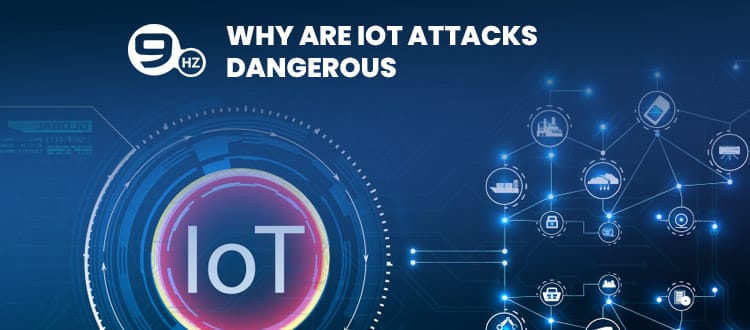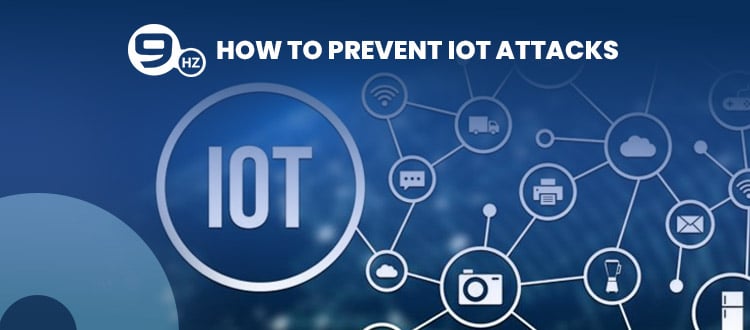We’ve all heard about cybersecurity problems regarding IoT devices, and there’s an inherent danger with connecting more and more gadgets to the internet and one another. Malicious hackers can initiate attacks and infiltrate thousands or millions of unprotected devices, disrupting infrastructure, shutting down networks, or obtaining access to sensitive data. And, as we become more reliant on IoT in our daily lives, these attacks may become more inconvenient or even hazardous. In this post, we’ll look at some of the most significant hacks and vulnerabilities that we’ve encountered before. Hopefully, this post will inspire you to prioritize security in your IoT development journey. If you are an organization looking to avoid such issues, hire IoT application development services right now!
What are IoT Attacks?
IoT attacks occur when malicious actors attempt to breach the security of an Internet of Things (IoT) device or network. When devices are infiltrated, attackers can steal or alter sensitive data, connect IoT devices to a botnet, or seize a system control.
IoT attacks occur when malicious actors attempt to breach the security of an Internet of Things (IoT) device or network. When devices are infiltrated, attackers can steal or alter sensitive data, connect IoT devices to a botnet, or seize a system control.
Why are IoT Attacks Dangerous to an Organization?

There are billions of IoT devices globally, all of which capture massive amounts of data in real-time. If intercepted, this data could provide an attacker with knowledge about the environment in which the devices function, the user’s contact with the devices, and even personal information about the user. Bad actors can exploit login credentials, health data, location data, and other sensitive personal data for evil purposes, and all of this information can be accessed through IoT assaults.
IoT security incidents aid in the facilitation of physical sorts of crime. Some IoT-connected surveillance cameras recently developed a software fault that allows attackers to substitute the cameras’ legal video footage with their own. This enabled the assailants to remove any video footage of their gang members committing burglary, murder, assault, or other crimes.
IoT assaults raise safety risks in addition to private ones. When attackers hack industrial controllers linked to the Internet of Things, they can cause severe damage or destruction to either production equipment or personnel. Many years ago, a pair of security researchers demonstrated to a terrified journalist that they could track down and take complete control of his IoT-connected car while he was driving.
As if that weren’t bad enough, attackers can also breach an entire corporate LAN via improperly configured IoT devices. One of the most prevalent methods is compromising an IoT-connected printer and utilizing it as a pivot point.
Also Read: How Much Does it Cost to Develop?
What are the Vectors of IoT Attacks?

There are three primary attack vectors for IoT security issues:
Device Issues
The first is the devices themselves. Devices with a defective or obsolete design can provide a rich target for attackers. In the past, gadget security was frequently an afterthought, so adequate security was not integrated into the product. Even newer devices with good security design can have security problems in their firmware, necessitating firmware updates whenever these bugs are discovered.
Communication Channels
Another vector for IoT threats is communication routes. Over various IoT communications protocols, devices communicate with one another, with a local base station, or even with a cloud-based service. These protocols must be secure to prevent either the device or the network from being compromised.
Applications and Software
It is the third vector for IoT threats. For example, if a device includes a web-based front-end, weaknesses in the web application could allow an attacker to obtain the user’s credentials and break into the device.
Most Egregious Examples of IoT Attacks and Vulnerabilities in Recorded History
1. Vulnerabilities of the Owlet WiFi Baby Heart Monitor
The Owlet WiFi baby heart monitor is right behind St. Jude’s cardiac devices. According to Cesare Garlati, Chief Security Strategist at the prpl Foundation, “this latest situation is another illustration of how devices with the best of intentions, such as warning parents when their babies have heart problems, may turn hazardous if exploited by a malicious party.”
Unfortunately, this is often the case with embedded computing within so-called intelligent gadgets. Because of the connectivity factor, they are vulnerable. Unfortunately, if manufacturers and developers do not address this and take extra steps to safeguard devices at the hardware layer, we will continue to hear these stories.
2. The TRENDnet Webcam Hack
Continuing with the baby theme, TechNewsWorld reports that “TRENDnet promoted its SecurView cameras for a variety of functions ranging from home security to baby monitoring and claimed they were secure, according to the FTC.” They did, however, have flawed software that allowed anyone who had a camera’s IP address to see at it — and sometimes listen to it as well.
TRENDnet also sent customer login credentials in clear, readable text over the Internet from April 2010 [until roughly January 2012]. According to the FTC, its mobile apps for the cameras retained users’ login information in clear, readable text on their mobile devices.
It is standard security practice to safeguard IP addresses from hacking and encrypt or at least password-protect login information, and TRENDnet’s failure to do so was surprising.
Also Read: IoT Impacting the Future of Web Development
How to Prevent IoT Attacks?
Several things must occur to prevent IoT Attack Surface. First, gadget manufacturers must incorporate security into the whole design process, not just as an afterthought. Devices must have sufficient access permissions on essential configuration files, minimize potential attack surfaces to a minimum, and employ up-to-date software components with no known vulnerabilities. Additionally, device manufacturers should be vigilant and swiftly patch new vulnerabilities found before they are weaponized.

Users must ensure that the devices are correctly configured and that any data gathered by the devices are appropriately secured and accounted for.
Organizations that deploy IoT devices must assume that they will be compromised and devise mitigation techniques to limit the impact. In the happening of a security breach, the incident team should be available. For gadgets that cannot be maintained in a confined area, organizations should employ tamper-proof enclosures. Organizations should also buy exclusively from device manufacturers who use security by design, and if in doubt, test devices during the acquisition process.
IoT assaults are dangerous, but they may be reduced with proper device design and security practices.
Advantages Of IoT Devices
The IoT devices have several advantages, some of which are listed below.
- Machine-to-machine interaction is encouraged by the Internet of Things (IoT).
- It has a high level of automation and control.
- It is better to operate because it is integrated with more technological knowledge.
- IoT has a lot of monitoring capabilities.
- By decreasing manual chores and time, the Internet of Things helps to save money.
- Device monitoring is improved by automating everyday operations.
- Efficiencies and time savings have increased.
- Good characteristics result in a higher quality of life.
The Bottom Line
That’s All. Every year there appear new hacking methods and techniques that IT companies have to respond to. In this guide, we have gone through IoT attacks and how IoT devices can help in preventing IoT security incidents.
Great Together!



![On-Demand Fuel Delivery App Development [Guide 2026]](https://theninehertz.com/wp-content/uploads/2024/03/fuel-delivery-app-development.jpg)





